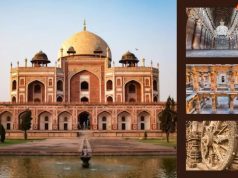If you have ever planned a wildlife safari in July or August, then you must have been disappointed to know that the national parks are closed at that time, but have you ever wondered why big national parks like Jim Corbett, Ranthambore, Bandhavgarh are closed as soon as the monsoon arrives (Why National Parks Close In Monsoon)? Actually, the answer to this question is hidden in not just one but many important reasons. Let us know in detail.
Breeding Season of Animals
The monsoon season not only brings greenery, it is also the time when a new life begins for the forest. This season marks the breeding season of many animals including tigers, leopards, elephants and many birds. Due to the rains, grass and vegetation grow in abundance in the forest, which creates a safe and nurturing environment for the newborn cubs.
Park Repair Time
The second big benefit of monsoon is for the administration. They use this time to repair and improve the infrastructure of the park. Many times roads, signboards, watch towers or camp areas get damaged, which is repaired during this time so that the park can open in better condition in the coming tourist season.
Safety of Tourists is also a Big Reason
During the rainy season, the forest roads become slippery, the paths can become blurred and there is a possibility of landslides or flash floods due to heavy rains. In such a situation, jungle safari not only becomes difficult but can also be dangerous for tourists. Therefore, closing the park during this season is a necessary precaution.
Which National Parks remain closed?
- Jim Corbett National Park, Uttarakhand: Some of its zones are open throughout the year, but the famous Dhikala and Bijrani zones are closed from June to October/November.
- Ranthambore National Park, Rajasthan: Safaris are prohibited here from July 1 to September 30. However, some parts from zones 6 to 10 remain open even during the monsoon.
- Dudhwa Tiger Reserve, Uttar Pradesh: This park also closes with the onset of monsoon.
- Kaziranga National Park, Assam: Famous for the one-horned rhinoceros, this park remains closed from May to October due to the possibility of floods.
When do national parks open again?
As the rains stop after October and the forest land is safe again, almost all the national parks and tiger reserves start welcoming tourists once again. The increased greenery and wildlife activity after the rains make the safari experience even more special.









